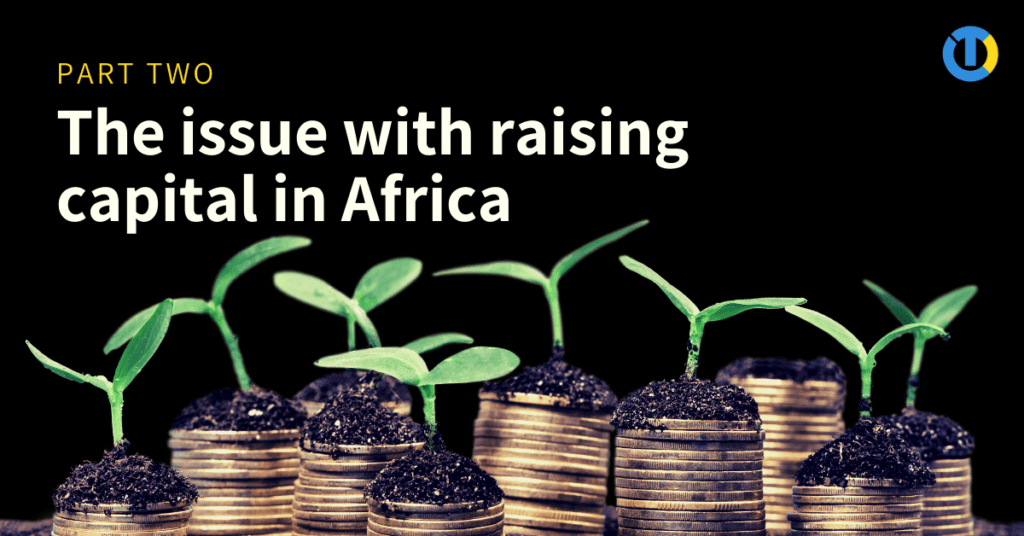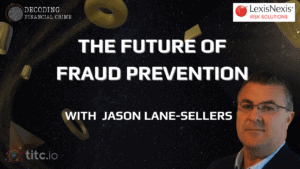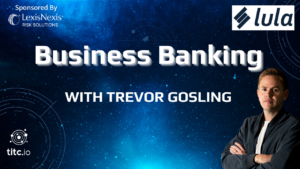 Guest writer – Kevin Mutiso. Passionate about the art of commerce and FinTech, Kevin co-founded and was CEO of the illustrious Alternative Circle, and is now Chairman of the Board of Digital Lenders Association of Kenya (DLAK). He has a lofty mission to impact 1 billion lives by 2030 through his many entrepreneurial pursuits.
Guest writer – Kevin Mutiso. Passionate about the art of commerce and FinTech, Kevin co-founded and was CEO of the illustrious Alternative Circle, and is now Chairman of the Board of Digital Lenders Association of Kenya (DLAK). He has a lofty mission to impact 1 billion lives by 2030 through his many entrepreneurial pursuits.
This is a follow-up to an article Kevin wrote back in 2018 on the same subject (Part One) and about “Black African Founders”. He took his time for part two, which was published last year so that he could confirm his conjecture.
Kevin writes candidly and with expert simplicity on a complex subject, using personal experience to expand on the central juxtaposition of his piece: Zero-sum game vs. positive-sum game.
It’s taken me a while to release the second part of this article, but I had to confirm my hypothesis by talking to various owners of capital in this market.
I hypothesized that capital was not being allocated strategically across all the different asset classes in Kenya, and I guess it can be extrapolated to the African context, excluding South Africa.
Capital and risk are bedfellows — one does not go without the other. The market system is the playground where capital and risk meet. Capital is the resource that allows you to build value. Capital can be in various forms but is usually at its core either equity or debt.
“Risk is that which can destroy the value that capital has created.”
A simple example would be to imagine a kiosk on a busy street in downtown Nairobi. The physical kiosk, stock, and employee would be acquired by capital in the form of equity or debt. The risks would be, theft, stock going bad or an incompetent employee. A good capitalist, (entrepreneur, businessman, hustler, etc.…) should manage the risk well so that the capital being utilized is able to generate a profit.
There could be different styles of capitalism and it has been evolving over time but I argue there are only two types of capitalism and they have been informed by a topic in math known as game theory.
1. Zero-sum game
2. Positive-sum game
The zero-sum game is a winner-takes-all all strategy. It is thought that this is the mainstay or default setting in capitalism but a little bit of research will show that this has been changing over the last 100 years and zero-sum games are played in markets where trust is non-existent. Trust and managing risk are essential ingredients to business. Corrupt market systems dominated by middlemen and gate-keepers are usually so inefficient that the only possible game is a zero-sum game, aka “Eat or be eaten”.
The positive-sum game needs a minimum critical mass for its fruits to be enjoyed by all. This is where two parties pursue a win-win scenario for both sides to ensure that both will benefit from the exchange of value. Trust is the key ingredient.
I shall give a real-life example that I recently went through. We have been building a last-mile retail brand in high-density areas of Nairobi. The buildings that we occupy are not usually built to the highest standards, but the population density more than compensates for this risk. In one building our electricity disappeared for 3 days and we had to run the generator. By day two we had noticed that it was only our outlet that was being affected by this blackout. We realized that when the electrician employed by our landlord was installing power from the mains, they used the poorest quality wire they could procure and as a result of the heavy rains we had a short circuit. It turns out that the landlord had asked for a better quality wire to be installed and had proof of this — so they were obviously misled. A few days later, the landlord’s spouse was seen walking around the area interviewing tenants as they suspected they were not being given accurate information by their spouse on the rental income earned and they were doing a manual audit to see if their partner was conning them.
This is a classic zero-sum game. Everyone thinks that by outsmarting the other they are great at business. Unfortunately, this cannot be sustainable. In the long run one limits their opportunities to create wealth, as they will have to keep looking for the next person they will outsmart and at some point everyone in the market will lack trust and thus will not want to transact.
“When your first question in any transaction is, “Can I get this cheaper?” be aware that you are playing a zero-sum game. You are managing the wrong risk. The question should be, “Can I get better value for money?”
On the flipside, if the electrician put in the right quality wire we would never have had a blackout. If the landlord procured a credible electrician, we would have never had to use a generator for two days. If the landlord did not try to cream something off the top from their spouse maybe the government would be able to collect the tax it requires to provide services that include checking and regulating building standards. In the long run the zero-sum game is a lose-lose. We lost revenue because of the downtime at the tills when the power was off and an additional expense was borne because the generator had to run. The consumer also suffered because there was a minor delay when the power went off and thus an inconvenience.
This example perfectly explains the situation in Kenya — where the modus operandi is zero-sum. Kenyan capital is not being allocated strategically because of the two reasons below:
1. Risk and capital are misunderstood
2. Playing a zero-sum game instead of a positive-sum game.
What happens if you understand risk and capital and play a positive-sum game?
I will use a common narrative to illustrate what to do when you have understood the two terms.
James, one of the “Wazees” (respected wealthy old man) has been a hardware trader in Gikomba for twenty years and every year he makes USD 100,000 dollars in profit. His children have just graduated from university and thus he has excess cash. His objective is to find a place where he can put this money so that he does not spend it carelessly, but instead save it for a rainy day and even leave some for his children when he crosses over to the next world. So he has to preserve capital. In zero-sum markets, to preserve capital he must invest in the “safest asset class” available to him and usually this means either taking it offshore like they do in most African nations or real estate like they do in Kenya. We all know the “Wazees” that have insane amounts of real estate. Perhaps a little while ago the returns were impressive but today the returns barely beat inflation. If you do not beat inflation you erode your capital because the purchasing power of your money is less. Therefore this strategy can only work for a small amount of time. Also, as the market matures, certain players emerge as gurus because real estate is their daily bread and butter and these “Wazees” are unable to compete with the products being offered as the players become innovative, create more relevant products and have competitive pricing. Sound familiar?
In a positive-sum game market, James would have access to several options to preserve his capital. These options are usually classified by the risk they carry. He would be advised by a “trained capital allocator” that he should spread his risk and ensure he beats inflation. They would first understand his financial goals and create a solution that would suit him. Say James has built up a cash reserve of USD 2 million over 20 years. He wants to have access to some cash so that he can take his wife on a month-long trip every year and have some spare cash just in case of an emergency. Inflation is 10% and the objective is to preserve capital efficiently and in the smartest way possible.
He would probably get the following advice.
– Cash and bonds 15% of portfolio (0–5% Return — Low Risk)
– Public Equities 15% of portfolio (7.5% — 12.5% Return — Medium Risk)
– Real Estate 50% of portfolio (10% — 20% Return — Medium Risk)
– Private Equity 15% of portfolio (15% — 25% Return — Medium to High Risk)
– Venture Capital 5% of the portfolio ( 25% plus Return — Very High Risk)
In addition to that, a good adviser would advise that you invest in Private Equity and Venture Capital through a pooled fund structure. Reason being that investing 5% of USD 2 million in one venture is extremely crazy risk to hold, but if one invests their 5% with 100 other “Wazees” the pooled fund can invest in several ventures and giving the same capital access to the several ventures at the same time. So instead of investing USD 100,000 in his nephews business, you can invest USD 100,000 in a 100 companies. This way if your nephew’s business fails then you do not lose everything. But if the Venture Capital finds and invests in the next Facebook, you get some of the profit too. These “Wazees” may also lack the skill to know where to invest because they created their wealth in a different space but still want to take advantage of the returns — therefore seeking advice from someone who is best in class at managing risk and allocating capital in the different segments may feel expensive at first but in the long-run the quality will shine through.
The portfolio described in the table would on average generate a 12–17.5%+ return every year beating inflation and serving all the needs these “Wazees” would have.
This would have a remarkable impact on our capital markets. Firstly, private businesses would have options to take debt or equity to execute their strategies. This would mean that the banks would not be the only source of capital and business would be able to grow comfortably. In this economy, several good business need to substitute their debt with equity and business would start booming almost immediately because now there would be some free cash flow that would have been otherwise going to servicing the debt. This free cash could be used to invest in new projects expand and create moats around existing products.
In the venture space, new and fresh ideas could be tested and tried, and those that win would create a lot of value. The other advantage of having a thriving venture capital space is that the economy is always disrupting itself and becoming more efficient, eliminating the need for middlemen and gatekeepers over time. The amount of value created in positive-sum markets creates enough to be shared by all stakeholders, entrepreneurs, employees and government.
In conclusion, Black African Founders are not raising capital locally because the holders of capital in this market have a winner-takes-all mentality and made their wealth playing a zero-sum game. But this mindset must change, and they can actually become even wealthier by playing a positive-sum game by allocating their capital strategically with a win-win mentality. I have shared this sentiment with several of the “Wazees” in my network, and they see the logic: let’s share this widely and see what comes of it. We are all on the same team. We all want to be wealthy, and a positive-sum game at worst will make the already wealthy wealthier!
Titc.io is a Leader in FinTech Recruitment – We connect companies and executives, enabling businesses to achieve key business objectives. Book a free 30-minute call with us!







